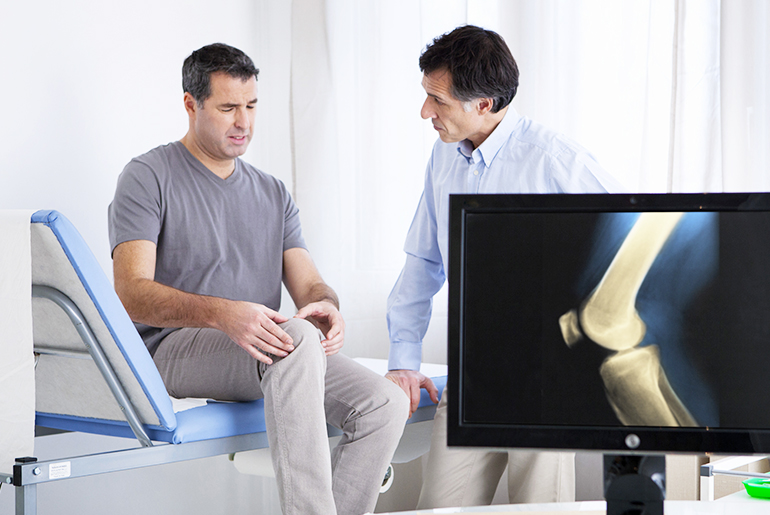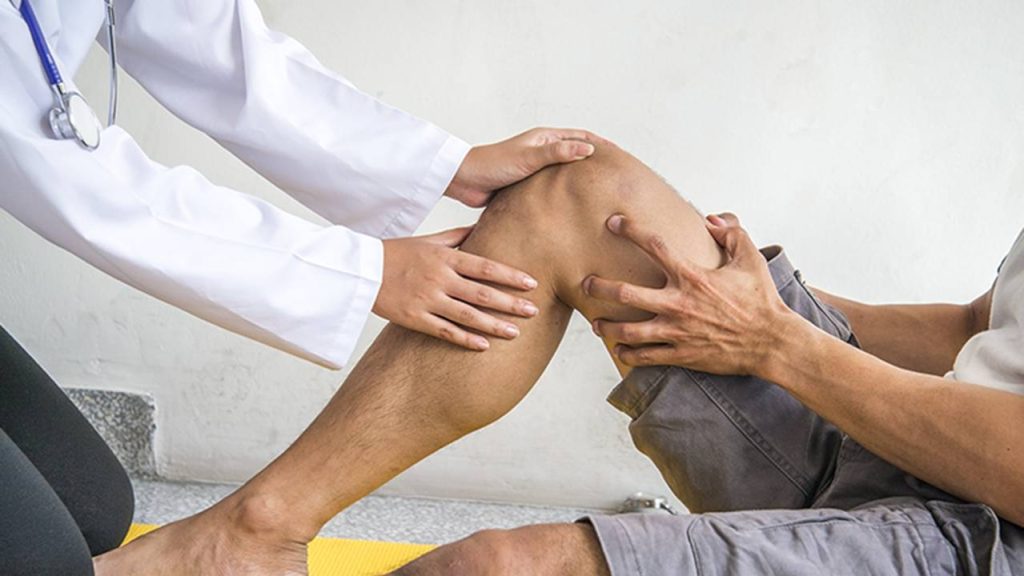Are you recovering from Total Knee Replacement or TKR? Congratulations! You made it past the first hurdle! With a little attention and care, you will soon be back on your feet! Can’t figure what is allowed and what is not? Here is a simple guide to post-op healing to help you put your best foot forward!
The knee is human body’s largest joint and is made up of the lower end of the thighbone, the upper end of the shinbone and the kneecap. A knee replacement includes replacing some or all of the component surfaces of the knee joint with artificial implants. A knee replacement is performed to repair the damaged weight-bearing surfaces of the knee joint caused due to inflammatory diseases or injury. The damage overtime leads to extreme pain and can restrict joint mobility. Knee replacement is a major surgical procedure requiring hospital admission for 2 to 3 days.
A knee replacement could be more precisely termed as knee “resurfacing” as this procedure actually involves replacement of the surface of the bones.
What should I particularly pay attention to post surgery?
No surgery is 100% painless and TKR is no different. While the chances of intense pain, complications and inflammation are minimal, there are some things you can do to make the situation more comfortable. The first and foremost thing to remember is to follow your surgeon, medical team and physiotherapist’s orders.
Remember RICE. Rest. Ice. Compression and Elevation should be the new best friend of every post-op TKR patient. The first one needs no explanation. One should rest and that too as advised by the doctor. Keeping the ankle above the heart also helps to decrease the swelling, raise blood circulation and prevent blood clots. Apply an ice pack for 10-20 minutes for 3-4 times a day. If the initial swelling has subsided, you can also opt for a heat pack. Use a compression cloth for additional help.
Do go undergo physiotherapy sessions: Following one’s physical therapist’s orders is paramount to regain one’s health as soon as possible. Perform them just as advised even though it may be uncomfortable at first. Exercise is a great way to get used to your new knee and heal faster too! In fact, post-operative exercises increase circulation which prevents dangerous blood clots. Gentle exercises like quadriceps sets, straight leg raises, ankle pumps, knee straightening exercises and more, are just some of the exercises a post-op TKR patient will be asked to do.
Take the prescribed medications: Adhering to the medical schedule as prescribed by one’s doctor is crucial for one’s healing process. It not only helps in reducing inflammation and pain but also helps avoid infection and blood clots.
Do manage your weight: An increase in weight means more stress on your new knee or even chances of arthritis on your other knee. So keep an eye on your diet and let your body heal itself.
Avoid unnecessary stress to the knee: A healthy body heals faster, more so in case of surgeries like TKR. So while it may not be time to hit the gym yet, one can walk, swim or indulge in other low-impact activities to keep the blood flowing and your body healing. Remember to not twist your knee, sit cross-legged and pick heavy weights of more than 9 kilos at this time.
Consult your orthopaedic surgeon prior to getting any other surgeries: Whether it is a dental surgery or a major operation, it is best to get the green light from one’s surgeon before going ahead as these surgeries may up your infection risk.
Avoid smoking and alcohol: Goes without saying that both these substances can interfere with your healing process and make you more prone to complications. Alcohol especially should be avoided if the doctor has put you on a course of blood thinners or high dose painkillers.
Maintain your posture: Do not engage in activities that jerk your knee or can cause you to fall down. Both these situations must be avoided at all costs.
Don’t hold yourself to milestones: Everybody heals differently. Every patient will progress at their own rate, so don’t be disappointed or stressed if your or your loved one is not progressing as steadily as one would like. Celebrate the accomplishments that you have made and strive for the next.
Warning signs to be on the lookout for
TKR is one of the most common and low-risk surgeries in the world. It sees very few complications with serious complications at a chance of less than 2% and even lesser when it comes to fatal complications. 90% of implant recipients observe a significant improvement in the quality of life and increased mobility. However, there are some risks associated with the procedure that may surface months or maybe even years after the surgery. While there is nothing to be scared of, any chronic significant pain should be discussed with your orthopaedic doctor. Here’s what the pain might signify:
Infection: This is by far the most common complication. An infection is not necessarily postoperative, it can happen months or even years after the main surgery. Sometimes an infection in a different part of the body can affect your implant and cause infection.
Fracture of bone around the knee.
Loosened implant: A loosened implant is not something that happens days or even weeks after the surgery. It can take years to develop and is one of the most common causes of pain post surgery.
Kneecap problems: Issues with kneecaps are a major cause of total knee replacement surgery. However, due to its complex nature, it is difficult to ensure that the new kneecap works just like the original. This requires expertise from skilled surgeons.
Alignment problems: If an implant is badly aligned it may end up not performing as per expectations or indeed exacerbating the issue.
Others: Bursitis, pinched nerves or complex regional pain syndrome are few other rare complications and causes of pain post TKR.
Thanks to advances in technology, TKR patients can now become mobile even faster than before. Adequate rest, exercise, medication and strict adherence to post-op instructions can ensure faster recovery rates and healing outcomes. So go out there and enjoy your new knee without any stress in your mind!





